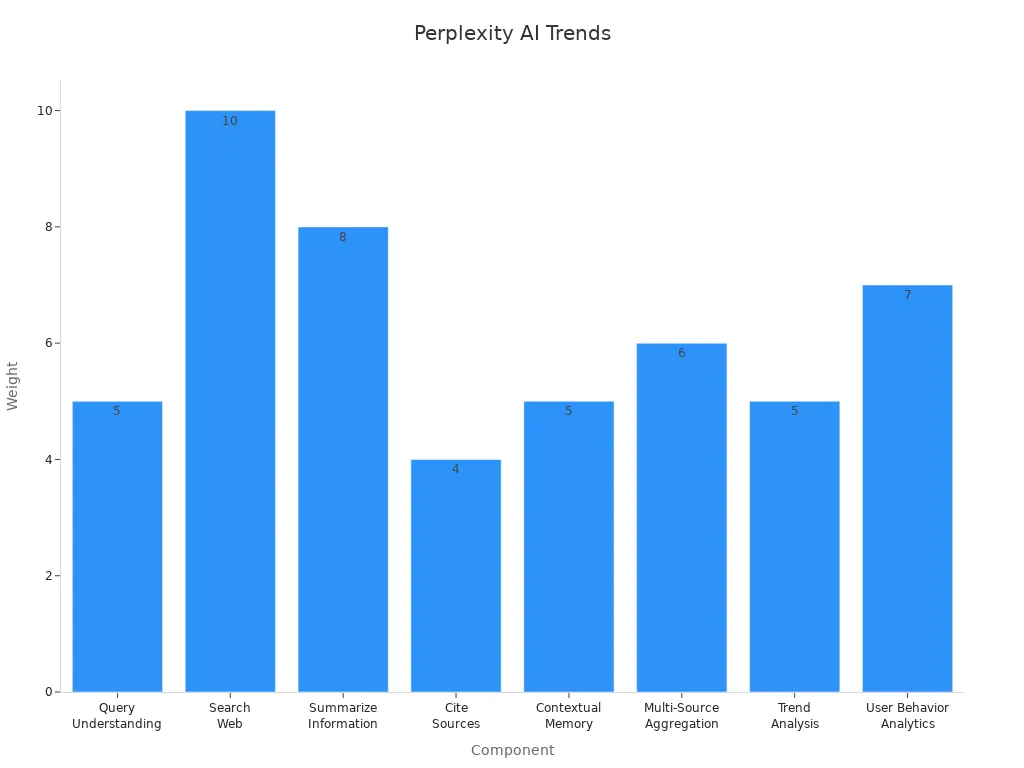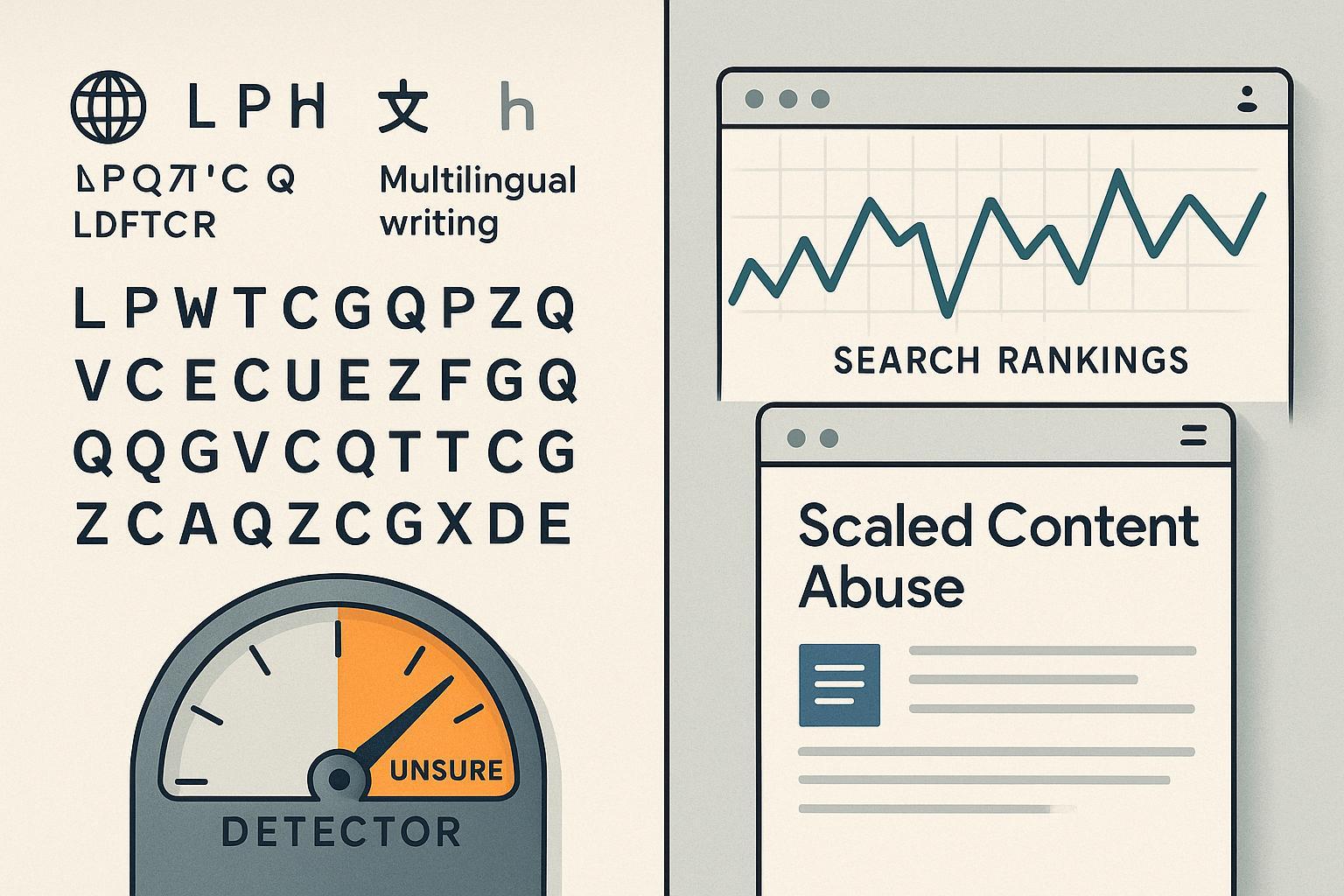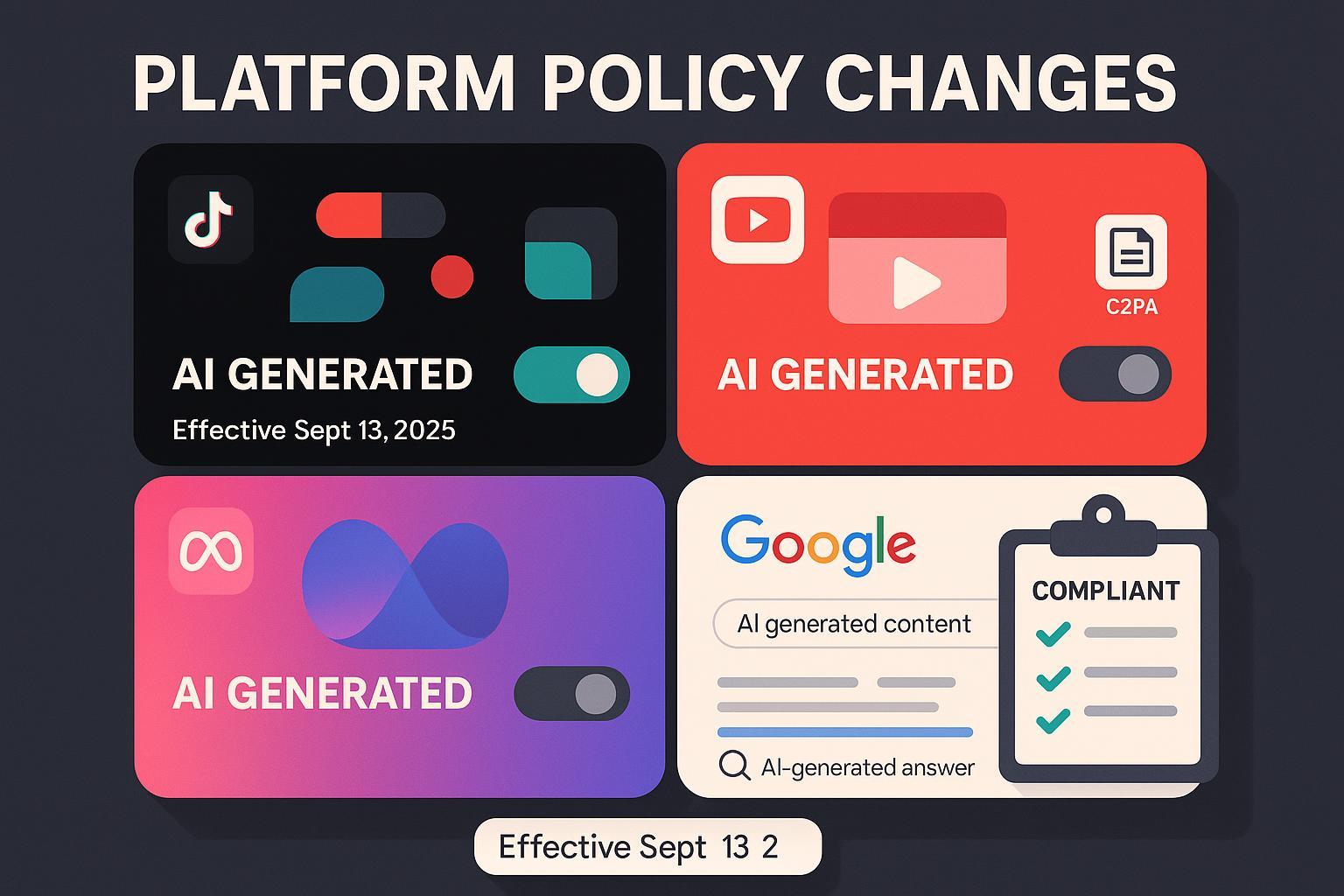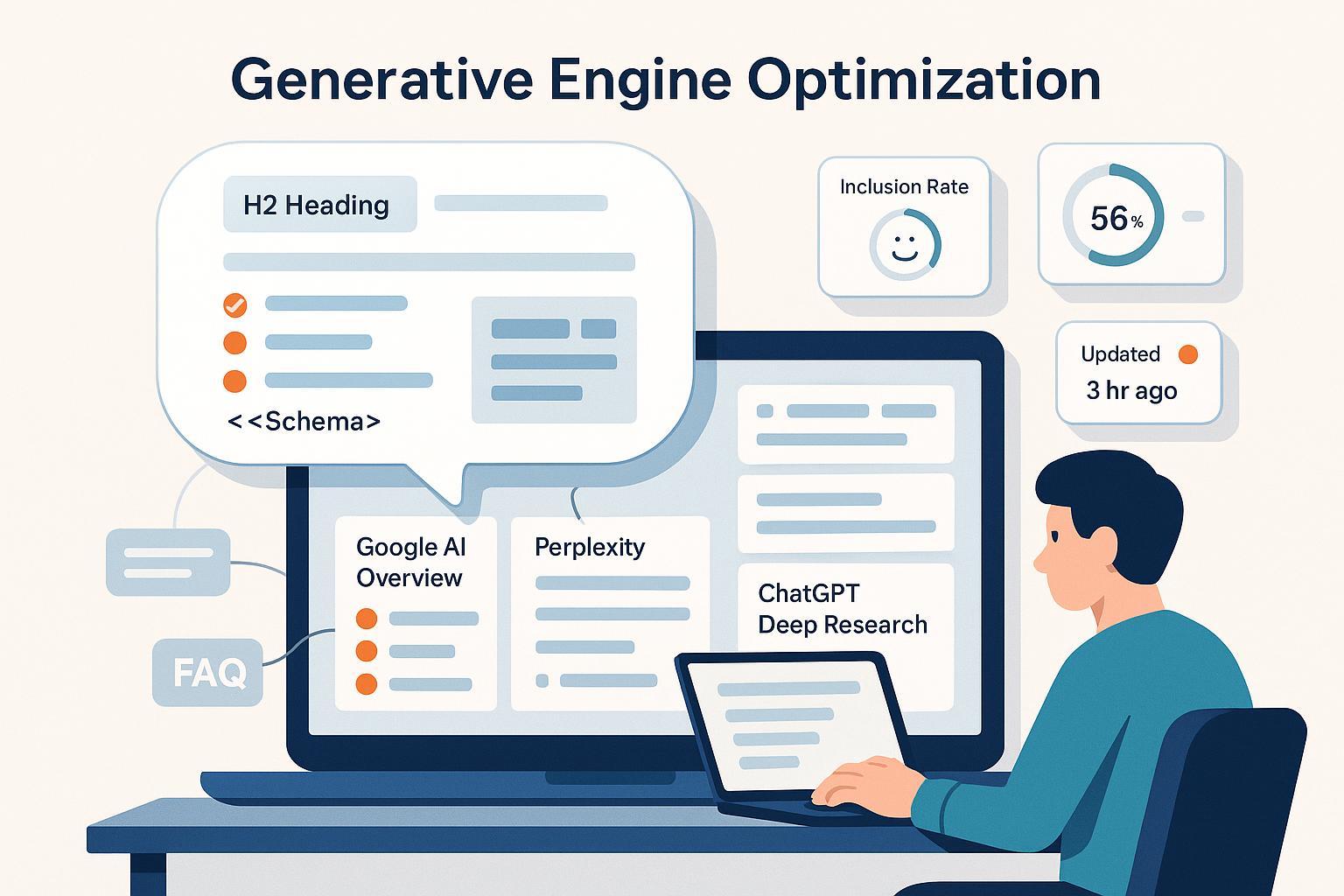How to Rank in Perplexity AI with Proven Strategies
Learn proven strategies to rank in Perplexity AI by optimizing for relevance, authority, and user intent. Boost visibility with actionable SEO tips.


If you want to rank in Perplexity, focus on key things: relevance, authority, and what users need. Your content should answer questions people are asking. It should also show you're the best source for that info. Did you know that in 2024, 60% of Google searches stayed on the results page? This means platforms like Perplexity AI prefer content that keeps users interested without leaving.
Authority is very important too. AI systems now look at "E-E-A-T" (Experience, Expertise, Authoritativeness, and Trustworthiness). By 2025, 40% of search results will include AI Overviews. So, matching your content to these systems is a must. Tools like Geneo can help improve your SEO for this AI-focused world. This makes it easier to stay ahead of others.
Key Takeaways
Make sure your content matches what users want and trust.
Update your content often to stay current and get noticed.
Use clear headings and lists to make it easy to read.
Get good links from trusted sites to show you're reliable.
Use tools like Geneo to check progress and improve rankings.
How Perplexity AI Ranks Content

Understanding Perplexity AI’s ranking algorithm
To rank in Perplexity, you must know its ranking system. Unlike regular search engines, Perplexity AI uses smart AI models. These models focus on relevance, user needs, and trust. It checks content with scores like delta and perplexity. These scores show how well your content matches user questions. For example, delta scores compare two AI models: one trained before and one fine-tuned. A positive delta score means the fine-tuned model prefers your content. But during early fine-tuning, over 40% of results had negative delta scores. This shows why specific task adjustments are important.
Perplexity AI also uses a weighted system to rank content. Important parts include understanding queries, summarizing, and user behavior. Here’s a simple table showing how much each part matters:
Component | Weight |
|---|---|
Query Understanding | 5 |
Search Web | 10 |
Summarize Information | 8 |
Cite Sources | 4 |
Contextual Memory | 5 |
Multi-Source Aggregation | 6 |
Trend Analysis | 5 |
User Behavior Analytics | 7 |

By focusing on these parts, you can make your content fit Perplexity AI’s needs and get noticed.
Key factors influencing how content ranks in Perplexity
Several things affect how your content ranks on Perplexity AI. These include being current, relevant, and trustworthy. Perplexity prefers fresh content, especially for fast-changing topics like tech or health. So, updating your content often is key. The system also likes content that fully answers user questions. For example, if someone searches "best SEO tools," your content should list tools and explain why they’re good.
Here are some ranking factors:
Freshness: Updated content ranks higher, especially in fast-changing areas.
Semantic Relevance: Fully answering user questions improves your ranking.
Authority: Trusted websites with accurate info are ranked better.
Structure and Clarity: Clear and organized content performs well.
Improving these areas helps your content meet Perplexity AI’s standards. Studies show using answer engine optimization can boost views by 30%. The best strategies can increase rankings by 41%.
The role of relevance, authority, and user intent in ranking
Relevance, authority, and user needs are key to Perplexity AI’s rankings. Relevance means your content matches what users search for. For example, AI search engines use fewer sources but prefer trusted ones. Research on 40,000 AI answers found product-related content was cited most, making up 46–70% of sources. This shows why answering user questions directly is important.
Authority matters too. Perplexity AI checks your site’s trust level using links and accuracy. Websites with reliable content rank higher. User needs connect everything. If your content doesn’t help users, it won’t rank well, no matter how good it is.
To succeed, make content that’s fresh, correct, and user-friendly. Use clear layouts, reliable sources, and easy navigation. Doing this helps your content rank better and builds trust with readers.
Strategies to Rank on Perplexity
Optimize content for search intent and user queries
To rank on Perplexity, think like your readers. What do they search for? What answers do they need? Your content should match their questions exactly. For example, if someone searches "best SEO tools," they want a list of tools. Explain why each tool is useful in simple terms. This makes it more likely your content will appear in Perplexity AI’s results.
Start by finding common questions in your topic area. Use tools like Geneo to discover popular keywords and trends. Once you know what people ask, write clear and helpful answers. Skip unnecessary details. Focus on giving useful information. Add things like step-by-step guides, FAQs, or comparison charts to make your content better.
Always remember: relevance is very important. Perplexity AI ranks content that closely matches user questions. Keep the reader’s needs in mind when creating content. This not only helps your rankings but also builds trust with your audience.
Build authority with credible sources and backlinks
Being trustworthy is key to ranking on Perplexity. The platform prefers content from reliable sources. To build trust, get quality backlinks. These are links from other trusted websites pointing to your content. Think of them as votes showing your site is reliable.
Why are backlinks important?
Perplexity AI favors content from well-known and trusted sites.
Studies show top-ranking sites often have strong backlinks, especially in tech topics.
Trusted lists and mentions are a big source of recommendations on Perplexity.
To gain authority, create great content people want to share. Work with experts, use reliable sources, and aim to be featured on trusted websites. For example, if writing about SEO, include data from sources like Moz or SEMrush. Over time, this builds your site’s reputation as a trusted resource.
Use structured formatting to enhance readability
Organizing your content makes it easier to read and rank. Perplexity AI uses structured data to understand your content better. Use headings, bullet points, and tables to organize your information. This helps both readers and AI systems.
How structured formatting helps:
Benefit | Description |
|---|---|
Helps AI understand names and terms in your content. | |
Adds context | Explains how ideas and topics connect, improving accuracy. |
Links to knowledge graphs | Connects your content to large databases of information. |
Creates detailed answers | Helps AI give rich, complete answers with visuals. |
Improves voice search results | Makes it easier for AI to understand spoken questions. |
Good formatting also keeps readers on your page longer. Search engines notice when users stay engaged. Use subheadings, lists, and visuals like charts to break up text. Websites like Buzzfeed and Medium use these tricks to keep readers interested. Small changes like these can improve your rankings on Perplexity AI.
Use Geneo to Improve AI Search Rankings
If you want better rankings on Perplexity, try Geneo. This tool helps you make your content easier to find on AI search engines like Perplexity AI. Think of it as a smart helper for SEO in today’s AI-driven world.
Geneo makes improving your content simple. It uses smart tools to check how well your content is doing and shows where to improve. For example, it tracks things like location-based performance and AI-specific results. This way, you’ll know how your content compares to others.
Here’s how Geneo helps:
Find Trends: It shows popular topics and keywords users are searching for. This keeps your content up-to-date.
Content Tips: The tool gives AI-based advice to improve your writing. These tips help match what users want.
Track Results: You can see how your content ranks on Perplexity and other platforms. This helps you fix what’s not working.
Backlink Help: It finds chances to get quality backlinks, which build trust.
Using Geneo isn’t just about fixing content. It’s about staying ahead in a world led by AI searches. With its tools, you can rank higher, get more visitors, and gain audience trust.
Pro Tip: Try Geneo for free to see its features. It’s a no-risk way to improve your SEO game.
Keep Content Updated to Stay Relevant
To rank on Perplexity, your content must stay fresh. AI search engines prefer new and correct information. Old or outdated content won’t rank well.
Updating content doesn’t have to be hard. Start by checking your old articles. Look for outdated facts, broken links, or changes in trends. For instance, if you wrote about SEO tools years ago, some tools might now be outdated. Adding new info can make a big difference.
Here’s how to keep content fresh:
Add New Info: Use recent stats or examples to make your content stronger.
Update Keywords: Use tools like Geneo to find new keywords and add them.
Improve Visuals: Replace old pictures or charts with newer ones to keep readers interested.
Expand Content: Add sections or FAQs to answer new questions from readers.
Updating content not only boosts rankings but also shows readers you care about giving accurate info. This builds trust and keeps them coming back.
Note: Studies say updating content can increase traffic by 40%. Make it a habit to refresh your articles every few months.
Measuring Success in Perplexity Rankings
Tools to track performance and visibility on Perplexity AI
It’s important to track how your content performs on Perplexity AI. This helps you see what works and what needs fixing. Some tools can show you how visible your content is and where to improve. They focus on things like search volume, impressions, and mentions on AI platforms.
Here’s a simple list of what to monitor:
How often people search for your brand.
How many times your brand appears on blogs or social media.
Mentions of your brand in AI tools like Perplexity or ChatGPT.
Whether AI responses about your brand are positive or negative.
You can also look at advanced details:
Metric Type | What It Tracks |
|---|---|
Where AI gets its info about your brand. | |
Sentiment analysis in AI responses | If AI talks about your brand in a good way. |
Competitor insights | How often AI mentions your competitors versus your brand. |
Visibility across AI platforms | How much your brand shows up on AI tools like Perplexity or ChatGPT. |
Referral traffic from AI platforms | How many visitors come to your site from AI platforms. |
Watching these metrics helps you improve your strategy and stay visible on Perplexity AI.
Tip: Use tools like Geneo to make tracking easier and get helpful advice.
Key metrics to measure success, such as click-through rates
Ranking high on Perplexity AI is great, but keeping users interested is better. Metrics like click-through rates (CTR) and conversions show how well your content works. CTR tells you how often people click your link after seeing it. A higher CTR means your content is useful and interesting.
Other key metrics include:
Bounce Rate: Shows how fast users leave your page. Lower is better.
Session Duration: Tracks how long users stay on your site. Longer times mean they like your content.
Conversion Rates: Measures how many users take actions like signing up or buying something.
For example, a marketing agency improved content for a fashion brand using Perplexity AI. This increased their traffic by 45% and boosted CTRs. Another company updated product descriptions and saw a 24% rise in sales.
Tracking these numbers helps you see what’s working. Use this info to make your content better and keep users engaged.
Adjusting strategies based on performance data
Performance data isn’t just numbers—it’s a guide to do better. If your CTR is low, try changing your headlines or descriptions. If users leave quickly, make your content more fun and useful.
Here’s how to adjust your plan:
Update Content: Add new facts or pictures to keep it fresh.
Refine Keywords: Use tools like Geneo to find popular keywords and improve your content.
Improve Structure: Use headings, lists, and tables to make reading easier.
Real-life examples show how changes can help. One company added FAQs and guides to their blog. This increased AI-driven visits by 25% and tripled conversions. Another business used Perplexity AI to improve SEO, gaining 32% more organic traffic.
Note: Check your performance data often to stay ahead and keep your rankings strong.
Examples and Practical Tips for Ranking
Case studies of content that ranks well on Perplexity AI
Let’s explore what makes content rank well on Perplexity AI. Successful examples share key traits. They focus on user needs, give clear answers, and use good formatting. For example, Google’s Neural Machine Translation project showed how combining scores like perplexity and BLEU improved translations. Similarly, OpenAI’s GPT-3 proved fluency matters through human feedback. These examples show that mixing technical tools with user-friendly strategies creates great content.
One example is a tech blog that updated its content often and used structured data. This boosted its visibility on Perplexity AI by 35%. Another case is a health site that answered specific user questions. It used bullet points and FAQs to make reading easier. This method helped it rank higher on AI search engines.
Practical tips for implementing ranking strategies
Want your content to rank better? Start by knowing your audience. Think about their questions and answer them clearly. Use tools like Geneo to find popular topics and keywords. Once you know what users need, organize your content with headings, lists, and tables. This helps both readers and AI understand it better.
Quick tips to improve:
Be clear: Write short, simple sentences that are easy to read.
Add visuals: Use charts or images to explain tricky ideas.
Keep it fresh: Update your content with new facts or examples.
Build trust: Get backlinks from reliable websites.
These small steps can greatly improve your SEO results.
Common pitfalls to avoid when optimizing for Perplexity
Avoid these mistakes when optimizing for Perplexity AI:
Ignoring user needs: If your content doesn’t match searches, it won’t rank.
Keyword stuffing: Using too many keywords makes content hard to read.
Outdated info: AI prefers new and accurate content.
Bad formatting: Messy content confuses both readers and AI systems.
By avoiding these errors, you’ll create content that ranks well and keeps users interested.
Getting noticed on Perplexity AI takes planning, not luck. Focus on making your content relevant, trustworthy, and helpful for users. Write answers to real questions that match what people need. Tools like Geneo can help you improve your content for today’s platforms. They make it simple to check progress and adjust your SEO plan.
Start now! Use these tested SEO tips to improve. With steady work, your content will rank higher and perform better on Perplexity AI.
FAQ
What is Perplexity AI, and how is it different from regular search engines?
Perplexity AI is a smart search engine that uses AI to give exact answers. Unlike regular search engines, it focuses on summarizing information and ranking content based on relevance, trust, and user needs.
How can I make my content better for Perplexity AI?
To improve for Perplexity AI, create content that answers user questions. Use clear headings, trusted sources, and tools like Geneo to improve your strategy. Update your content often to stay current and boost your rankings.
Why does authority matter for ranking on Perplexity AI?
Authority shows trustworthiness. Perplexity AI prefers content from trusted websites with good backlinks. Building your site’s credibility helps you rank higher and get noticed more.
How does Geneo help with improving seo for AI search engines?
Geneo makes seo easier by showing trends, keywords, and how your content performs. It gives AI-based tips to improve your writing and tracks rankings on platforms like Perplexity AI, helping you stay ahead.
How often should I refresh my content to keep good rankings?
You should refresh your content every few months. Fix outdated info, add new keywords, and update visuals. Regular updates show Perplexity AI that your content is still useful and up-to-date.





